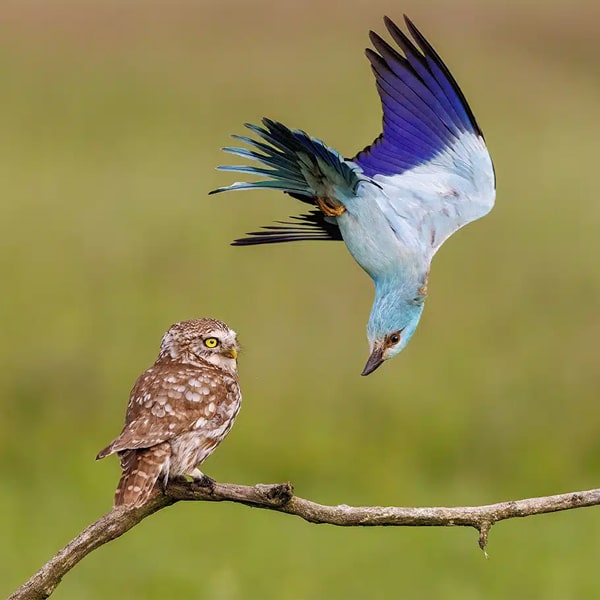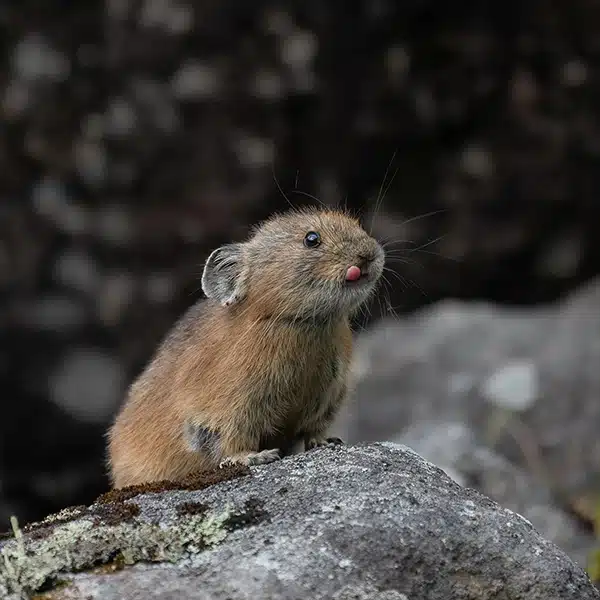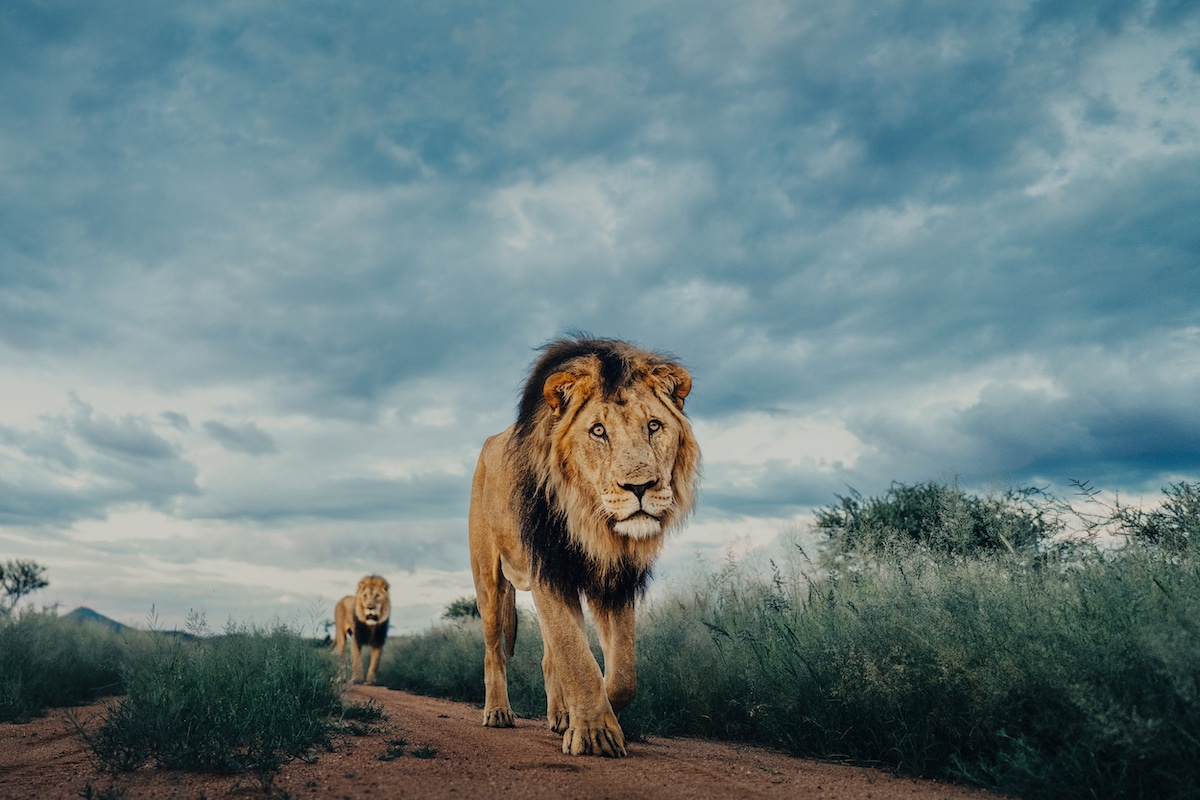
Photographer Donal Boyd is known for his intimate portraits of wildlife. These unique images are made possible by his custom-crafted steel camera box. By placing it strategically in front of lions, elephants, and other African wildlife, he's able to get innovative images of these animals. In forgoing the typical telephoto lens, Boyd closes the gap between humans and wildlife and brings unparalleled familiarity to his photographs.
Boyd is passionate about his work and through his imagery, he hopes to spark more interest in the current state of wildlife. His desire to have the animals interact with his camera box is born from this interest. As they take notice of the camera, he's able to document their personalities in a manner that simply isn't possible from afar.
In his photographs, we see the curiosity sparked in a leopard's eye and the beautiful wrinkles of an elephant trunk feeling the box's steel surface. At the same time, his images have a bird's eye perspective that gives insight into animal behavior.
Given his passion for these creatures and their conservation, it's no surprise that Boyd loves sharing his work and his creative process. His series In the Field with Donal Boyd on Adorama TV gives incredible insight into his work and, as a bonus, is filled with spectacular imagery from his photo shoots.
We had the chance to speak with Boyd about his work and what drew him to wildlife photography. We also discuss what led him to build the camera box and how it led to his favorite photo. Read on for My Modern Met's exclusive interview.
What drew you toward conservation photography?
As a young boy, I would spend hours in the forest behind my family home. Fixated on small details, I wondered how it all worked together. The moss growing on the tree, the salamander sleeping beneath a log, the stream with crayfish clinging beneath the eddies that slipped its way through the dense overgrowth. Whenever I’d return from hours out in the forest covered in mud, my mom would always ask me, “What did you see today?” At first, I wasn’t sure how to express what I’d seen, so I would draw it, sketching out my explanations. This routine continued until my father lent me a very early age digital camera, which was the start of my continued photographic infatuation. The more intently I looked through the lens, the more I wanted to understand, which led me to science.
Eventually, alongside developing my artistic approach, I pursued an education in science and completed two degrees in chemical engineering with a focus on sustainable energy. Because at the same time I wanted to understand the workings of nature, I knew that it was under threat and I wanted to also figure out a way to help protect it. After some years, I was drawn back into pursuing photography full-time, now with a combined approach of science and art. I began to blend the two disciplines together to form what I like to call “Conservation of Wildlife and Nature through Visual Advocacy.” This is my mission and my methodology.
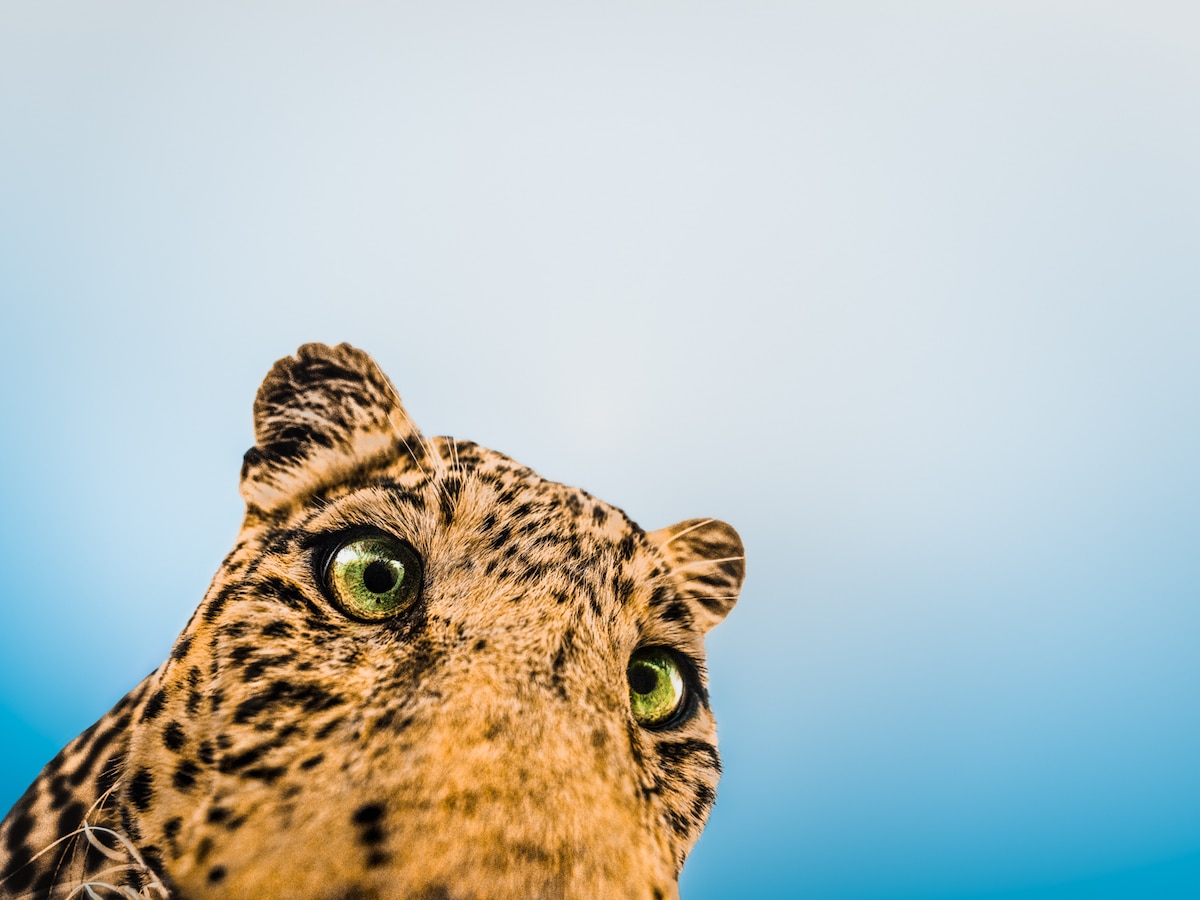
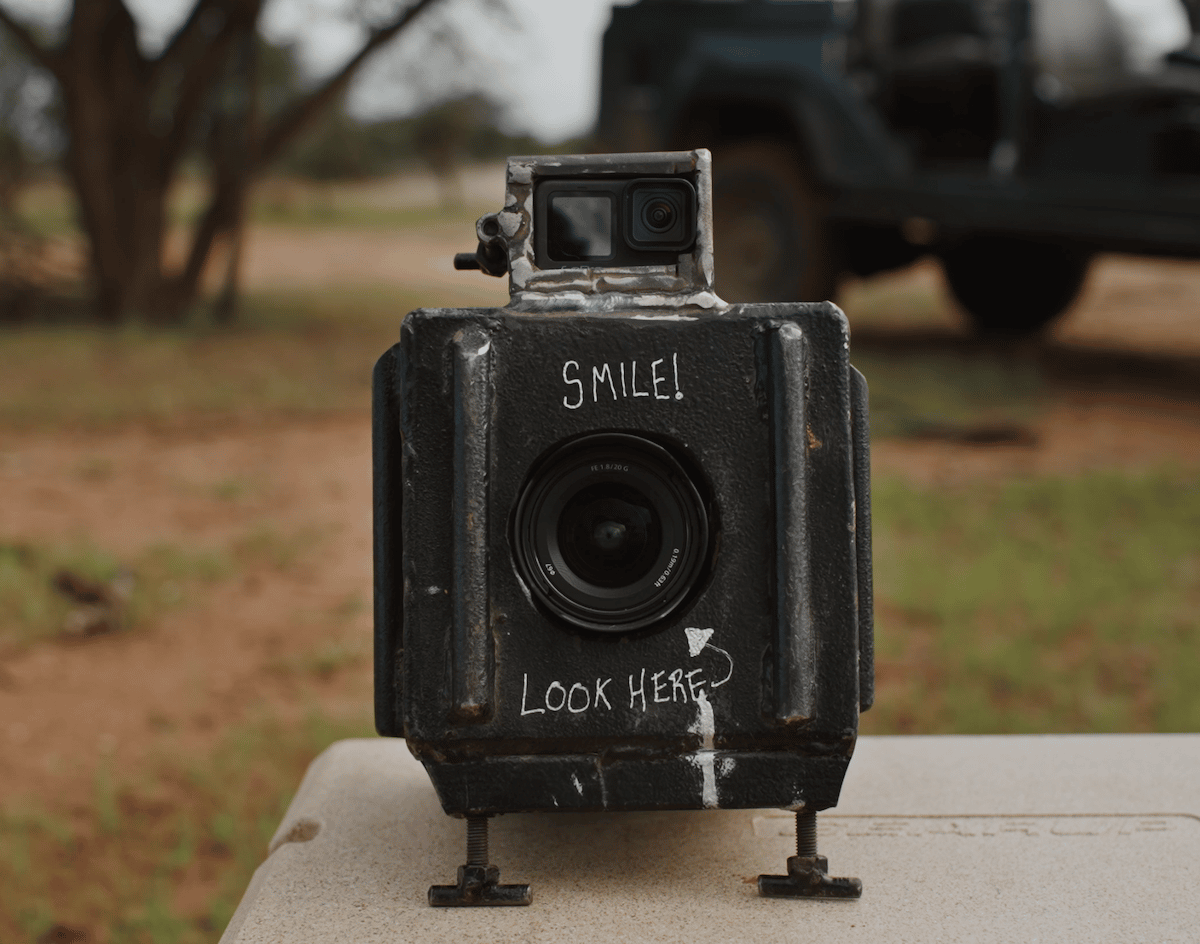
What inspired you to make the custom camera and how did you go about creating it?
From the start, one of the major driving points for me to create the camera box was to capture unusual and intimate portraits of animals that stood out from the constant stream of wildlife portraits. Because I found, in a way, people maybe are too used to seeing the same sort of portraits. Primarily, wildlife portraits are captured using telephoto lenses, which to the majority, make wildlife appear closer than they actually are. But since the world does in fact have some understanding of optics, at least subconsciously, the optical trick is, in a way, less effective. Generally, viewers can feel the physical distance between them and the subject. They know it must have been captured with “a zoom.” And this is not so desirable for me, considering my goal is to get people to empathize with my subjects, which is for sure catalyzed by minimizing physical distance.
Keeping all this in mind, getting physically close to wildlife of any kind is usually not very safe. But rather than just putting the camera on the ground and hoping for the best, which I've seen before, I wanted to avoid the risks. Since in my view, this poses a potential danger to the animals if they decide to eat the camera, for example. So, in order to overcome the obvious difficulties, I decided to engineer a solution.
First sketched out on a napkin, the camera box was later born in the metal shop of Erindi Private Game Reserve in Namibia. It was the simplest design I could come up with at the time—a metal box to encase the camera for protection and designed as not to include sharp edges or bits that could break off and be dangerous to the wildlife. Working with my team at Erindi, we created the first version of the camera box back in 2018. Like the current model, it was made of steel, has an opening on the back for the camera to go in and an opening on the front for the lens. Designed to also fit a GoPro for video and a radio remote trigger, it's pretty rudimentary, but it works surprisingly well most of the time.
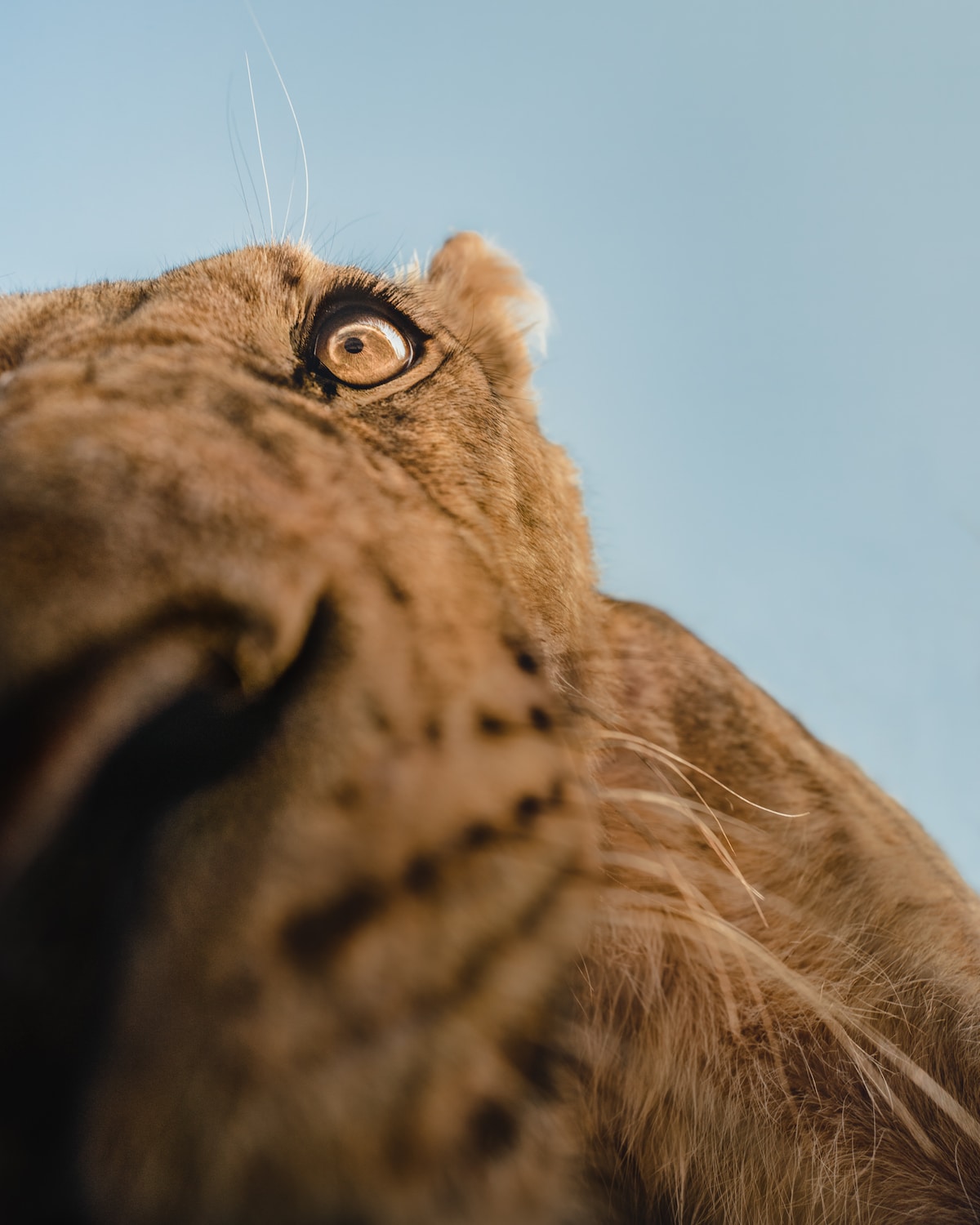

What sort of observations go into the camera placement?
Coinciding with my desire to understand nature, I’ve always been drawn in particular to animal behavior and observing wildlife as individual characters. Sentient beings who each have their own personal story and life history. Slowly, over the years, I started to recognize the small mannerisms and postures that give each of my subjects' individual character. And through capturing the essence of each of these characters, I’ve realized I could more effectively catch the attention of viewers by showcasing the unfamiliar visuals of each species that I portray.
Once I have the attention of a viewer for at least longer than a split second, there’s a chance they might look closer, to understand, and to empathize with the plight of the species that I’m so desperately trying to get people to care about. With the camera box, I’m hoping to capture new and intimate perspectives of my subjects that showcase a side of their character that has rarely been seen before, if at all.
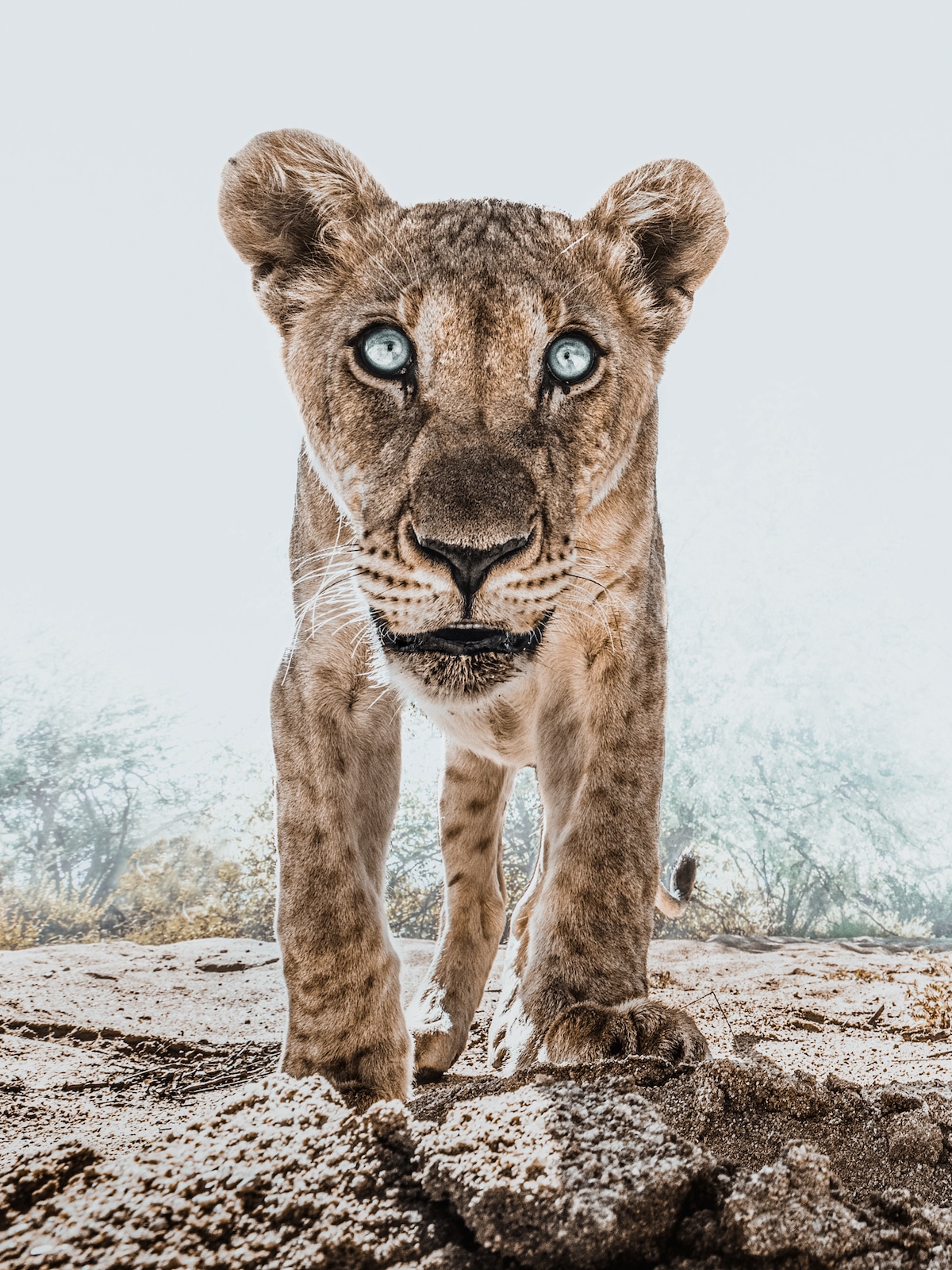
What's the biggest challenge of using this camera and the biggest reward?
The biggest challenge is the inherent unpredictability of wildlife. As much as we think we might somehow understand their intentions or their desires, we don’t. Elephants, lions, leopards, and all other animals that I portray have a mental world of their own that we can only attempt to understand. The biggest reward is when I capture something with the box that surprises me—something that I’ve never seen before, which gives me that minute little glimpse into the world of an animal that I might never fully perceive.
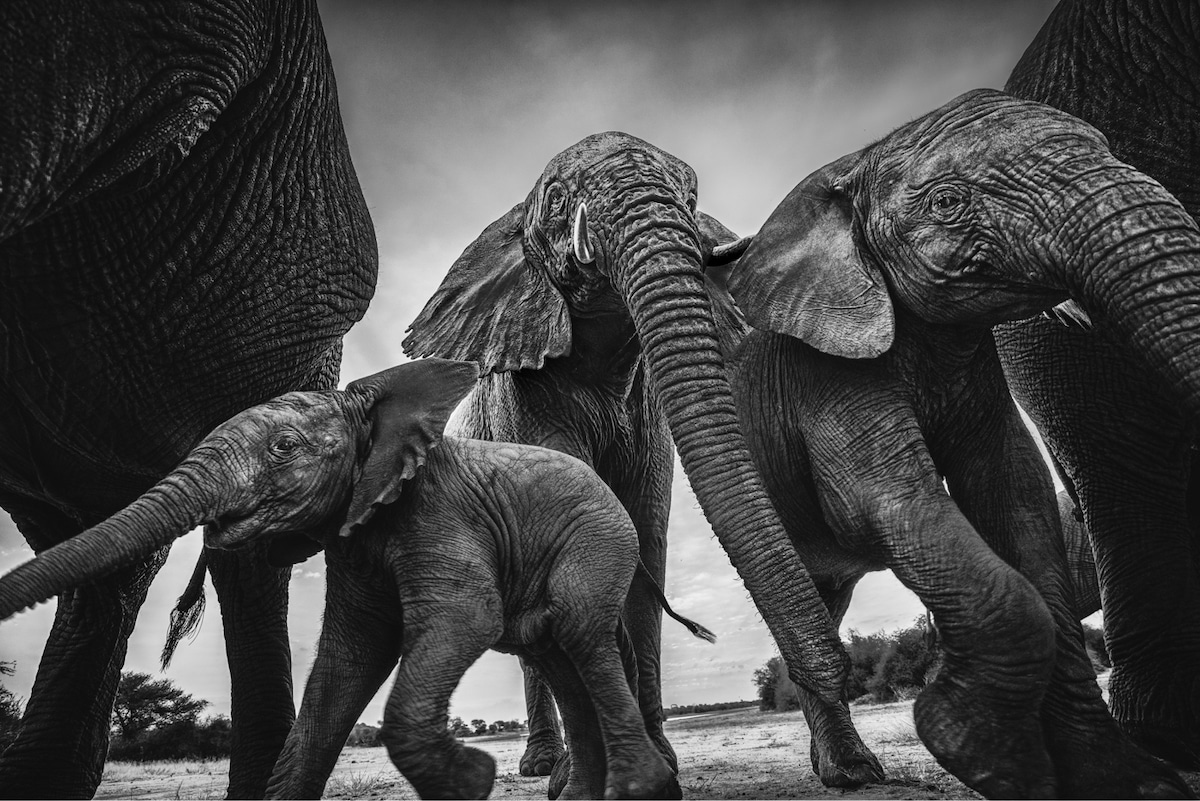
What's your favorite image taken with the camera and why?
My favorite photograph was captured back in 2018 of a herd of elephants as they moved across an open area near a watering hole. It's my favorite because it revealed to me a context of the lives of elephants that I never understood before then. In the photograph, closest to the box is a young elephant, curiously looking into the lens. Trunk pointed forward, moving around the box cautiously. You can see the peaceful observation in his stance, but also hesitation. To the right of the box, looking intently is an older sibling. More joyful, and appearing more confident. In the center is the matriarch, the mother of the herd, looking forward and not at the box. She had seen it earlier, acknowledged it, and paid no more attention to it up to this point, leaving it to the young one to inspect closer with the natural curiosity of a toddler. To the left and right sides, older elephants, already having moved past the box. Guardians of the toddler. Together, they formed the barrier around the young one, since to them the box itself was not familiar, and in their minds, there might be other unfamiliar things yet to be seen close by. So the herd surrounds the youngest for protection.
From the safari vehicle where we sat far away in silent observation, it didn’t appear this way. It only looked as if the herd moved towards the box and the young one was at the feet of the older elephants in the back. But from the camera box on the ground in their path, you could see the formation they created clearly. The youngest and most curious in the center, an adolescent to the right curious just the same, the leader matriarch in the back looking forward, and the guards on the side, moving as a unit. This sort of observation revealed to me the way elephants interact with the world around them—methodical and with their own sort of familial wisdom.
From then on I started to pay much more attention to the formation and behavior of elephants, how they structure their herd when they move, and the way they interact with each other. It’s taught me a lot about their culture, if you can call it that, and has helped me to further express the importance of protecting this incredibly complex and sentient creature.
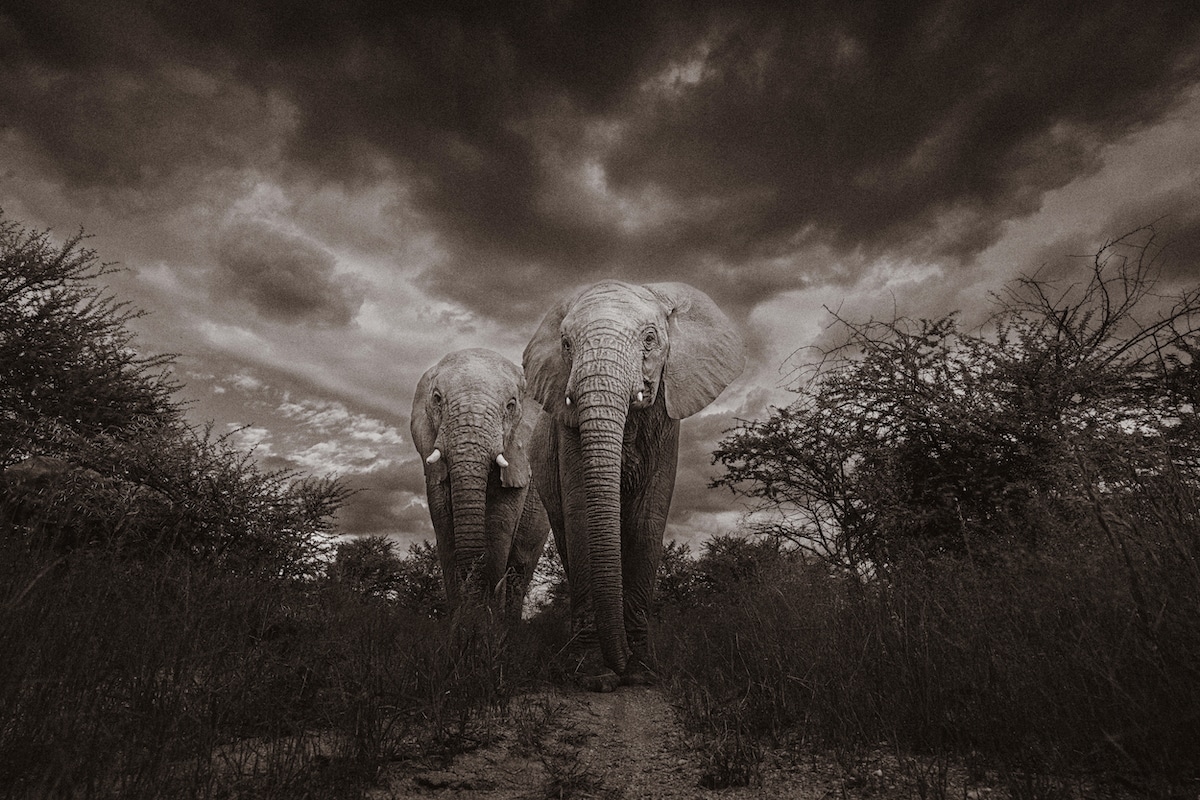
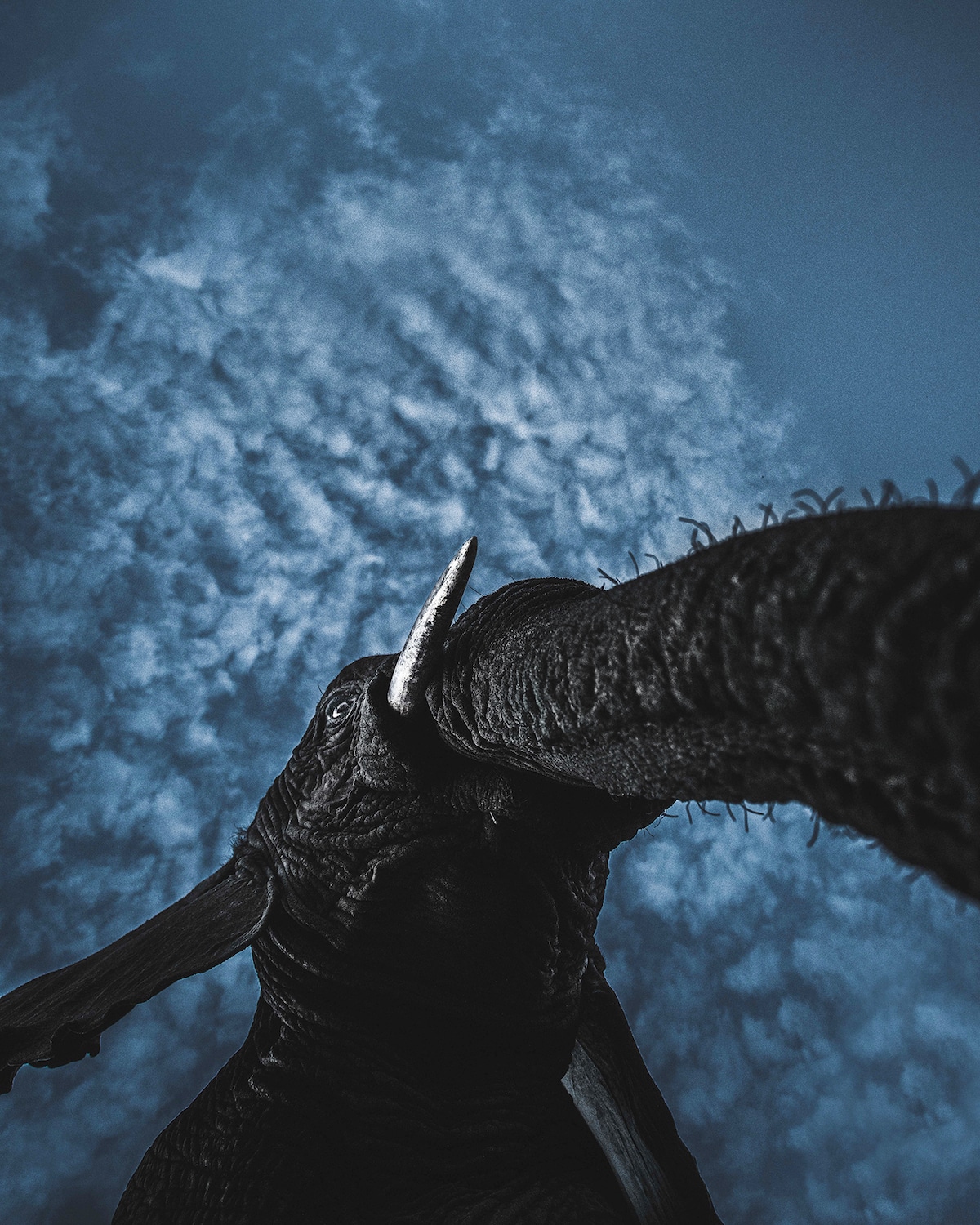
What do you hope that people take away from looking at these portraits?
I hope that people can sympathize—relate in some way to the plight of these animals. Whether or not I incorporate the full back story of a species with an image or not, I hope people can at least see the life in their eyes and the emotions of a species or individual that are uniquely their own. And I hope they can become more intimate with the fact that just like us humans, these animals also have their own character, personalities, and worlds that they belong to.
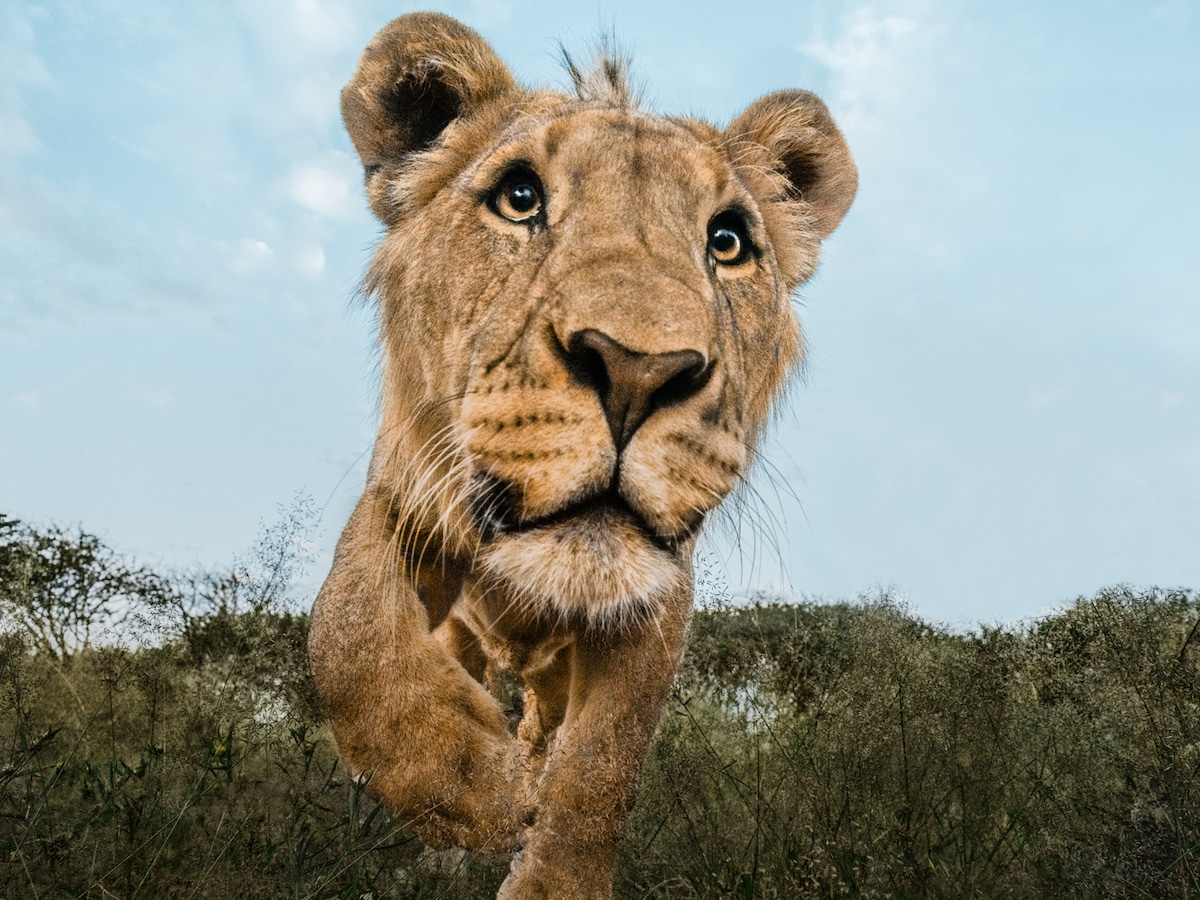
What adventure is next for you?
This weekend I’m heading to Hornstrandir Nature Reserve in Iceland to photograph Arctic Foxes. In September I’ll be heading to Brazil to the Pantanal to document conservation projects in the Pantanal at Caiman Ecological Refuge. At the same time that I’ll be creating a new photo series, I’ll also be producing three new episodes for the Adorama series in which I'll cover jaguar conservation and conservation of the hyacinth macaw.












































































